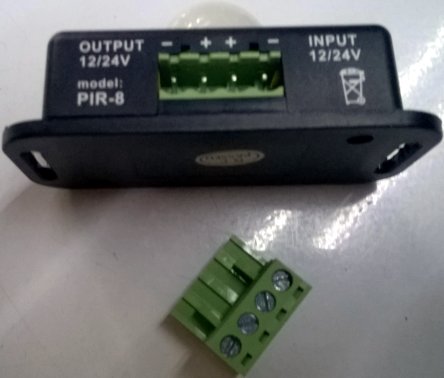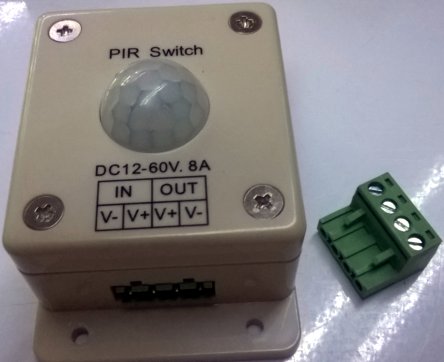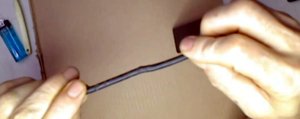Phone Texting: (727) 834-0438
2803 Troy Road
Springfield Ohio 45504
Pyroelectric ("Passive") InfraRed Sensors (PIR Sensors), Photo-Sensors, Temperature-Sensors, and other sensors will be mindful even when you are not (it's their only function).
When building your off-grid battery-bank's power house, consider incorporating photo-sensors that either turn appliances and lights on or off when the sun rises or sets, as needed.
Motion-sensors will eliminate forgetting turning off lights and other consumers of electricity. Timed-switches will start the bread-maker and other devices without any further input from you, etc.
Automation also ultimately aids in the long-life of the battery bank, provided of course that the states of load/battery/charge equilibrium has been attained (preferably year-round).
By mere motion or presence, the lights turn on all by themselves; if the lights sense no activity for whatever period that is pre-determined in the configuration (usually five minutes), they simply "know" to turn themselves off until motion is sensed again.
Some of the more important lighting requires an extra apparatus that permit the manual control (override) of the motion-detection system.
In the consideration for automation, might also be efforts toward maintenance-free and fool-proofing. Efforts that may be key to the survival and sanity of the pre-dying, a.k.a. off-grid aging individuals, is the adage to do it Before you lose it.
Automotive stores, or Automotive sections at a local Walmart, are some of the avenues for direct-current lighting and switches.
Any ordinary 12v automotive accessory applies to an off-grid 12v battery bank. These items require no additional equipment or know-how to put into action.
Look around your property for 12v items that simply have been converted by the capitalists to 120v (usually involves a heavy clunky item that eventually will burn up without notice, it's called a step-down converter).
Remove the converter and guess what you are left with? That's right, you just breathed new life into a dead AC appliance by converting it back into the DC appliance it was before the capitalizers embedded it with the short-lived converter device.

Having an additional switch between the motion-sensor and a load allows for the over-ride of the sensor when desired, or when the battery banks need a break due to low sun or wind conditions. The power-rail can simply be turned completely on or off without a major undertaking.
So, for the 120v items that only require 12v, simply locate and remove the step-down converter and you've just created one less item to worry about (which ordinarily would be sending you back to the store to replace the appliance prematurely).
With the step-down converter removed, the item can now be connected directly to the stable electrity of the 12v battery-bank.

You are going to get old (hopefully), and forgetful (probably), and therefore some safeguards in addition to switches and sensors, should amply be considered while you still have the mind to do so.

Automate your world to have lights turn on without any input required by you! Automate your lights, heaters, cameras, alarms, and much more!
Automate your lights, heaters, cameras, alarms, and much more!

Basically anything you can power with 12 or 24v can be accomplished with these devices.
For added irony the following is presented.
If your device doesn't play the video, try this .mp4 version instead (or just right-click and download the video to your own computer for the smoothest play).
Plastics suck almost as much as predatorial Capitalizers ';-(
The following are some variables and questions that still need ironing out concerning the common true-and-tried wet-cell deep-cycle battery.
It has been determined by others that DC electricity flows from negative charge to positive charge.
(see: https://van.physics.illinois.edu/qa/listing.php?id=583 )
If this is so, that electricty flows from negative to positive, then are not our installations of off-grid switches backwards?
In AC electricity, it is said that the positive wire is the codes-approved wire which is directed to a switch.
However, in a DC configuration why would we copy the AC dictates to our loss?
Since the DC Battery Bank issues negative electrons that don't complete a circuit until they meet up with one or more of the positive, then simply keeping the negative electrons contained closest to the battery bank and switch, could save energy that might be better-purposed elsewhere.
Scenario:
1.) A battery (with positive and negative leads), and a switch that is some distance from the battery bank.
2.) A load or appliance that is a considerable extended distance beyond the switch and battery bank.
= 9.) Complete waste of potential energy if we follow the Codes-Approved AC dictates.
As an example,
If energization of the wire is stopped at the switch (a few feet away from the battery bank), then are we not eliminating potential hazards? Are we not also conserving energy by not losing our voltage and current due to having a long line energized at all times?
Oddly enough, the only analogy that came to mind is, when we pee or poop, it's good that the stuff isn't directly right at the hole, but is stopped further inside somewhere (thereby conserving our energy to make it to the bathroom).
Excess energized wire is loss, also referred to as "heat loss", "wire-loss" OR (I like this one), "Phantom Energy loss/consumption", it's also referred to as "line loss", etc.
As a final note, if anybody is already doing experiments with a hybrid battery bank using conventional batteries along with the Li-Ion, please contact me, I'd like to be in the loop.

 If your device doesn't play the video, try this .mp4 version instead (or just right-click and download the video to your own computer for the smoothest play).
If your device doesn't play the video, try this .mp4 version instead (or just right-click and download the video to your own computer for the smoothest play).
Today's Date is Wednesday, 24-Dec-2025 08:50:34 EST
2014-2025 Kenny Hendrick and the Public Diary. All Rights Reserved.
Posted for educative purposes under THE FAIR USE NOTICE: These Videos may contain copyrighted (© ) material the use of which has not always been specifically authorized by the copyright owner. Such material is made available to advance understanding of ecological, political, human rights, economic, democracy, scientific, moral, ethical, and social justice issues, etc. It is believed that this constitutes a 'fair use' of any such copyrighted material as provided for in section 107 of the US Copyright Law. In accordance with Title 17 U.S.C. Section 107, this material is distributed without profit to those who have expressed a prior general interest in receiving similar information for research and educational purposes. For more information go to: http://www.law.cornell.edu/uscode
"Copyright Disclaimer Under Section 107 of the Copyright Act 1976, allowance is made for "fair use" for purposes such as criticism, comment, news reporting, teaching, scholarship, and research. Fair use is a use permitted by copyright statute that might otherwise be infringing. Non-profit, educational or personal use tips the balance in favor of fair use." Disclaimer: 17 Notwithstanding the Provisions of Sections 17 U.S.C. @ 106 and 17 U.S.C. @ 106A, the Fair Use of a Copyrighted work for Educational Purposes- Not For Profit- Non-Commercial. (https://creativecommons.org/licenses/by-sa/3.0/legalcode